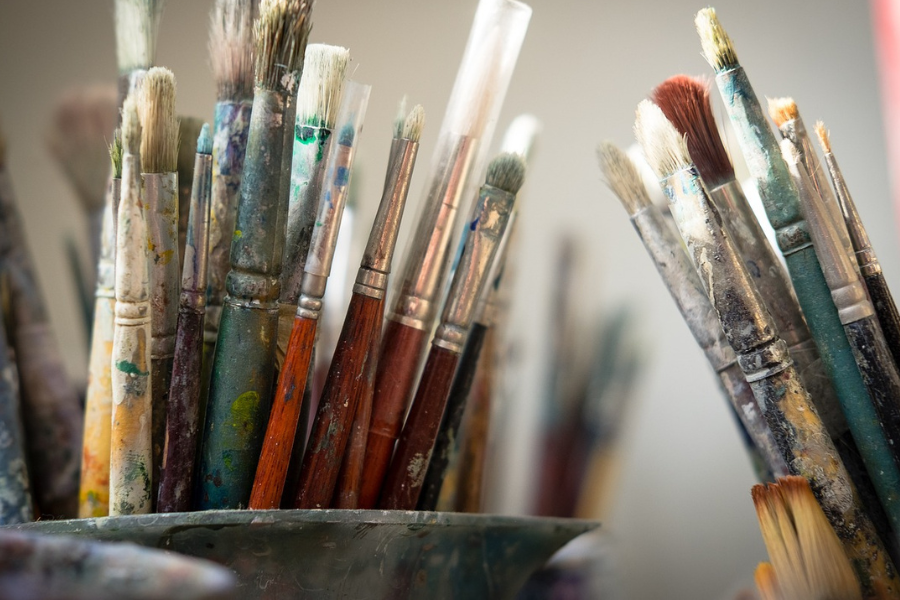Different Types of Paint Brushes

Different Types of Paint Brushes
Painting has always been a unique and fascinating form of art, something that both children and adults enjoy. When it comes to art, you need a special tool that acts as the steering wheel of a vehicle and for painting. Painting has been around for centuries, but it was the painting brush that changed everything, giving man a great tool to create masterpieces for people to admire. The painting brush helps the artist to transfer his creativity onto a blank canvas, creating mesmerizing works of art with just paint and water. Everyone considers the painting brush to be the weapon of the artist, and rightly so. However, this weapon comes in a variety of sizes and shapes, which ultimately determines which weapon an artist chooses depending on how he wants to create his art.
Best Paint Brushes:
Natural Hair:
Natural hair paintbrush materials are usually the premium brushes used by most oil painters, as they work best with oil paints, which means they need to be cleaned with paint thinner. The natural hair in these brushes is mostly from the hair of badger or Chinese boar. The back hair is also ideal for painting on water-based paints, as it absorbs water well. Natural hair brushes also come in camel or ebony hair, but these brushes tend to be expensive. These brushes are often used in art to create crisp, brush-free artwork.
Synthetic Hair:
Synthetic hair brushes are brushes with nylon or polyester bristles. These are the most common paint brush types used in stationery and academic work, which is why synthetic brushes were some of the first paint brushes we used when we were kids. These brushes are best for watercolors and are not recommended for oils at all, as they tend to be hard and can scrape the paint off the canvas when used for oil painting. Synthetic hair brushes are a cheaper option when you’re on a budget, but they do a similar job of blending paint as foam brushes.
Split Bristles:
Split Bristles are brushes that have separated bristles that are meant to be used only with latex paint. These brushes are usually only found on high-end synthetic brushes. Since they have a larger surface area, more paint brush techniques for painting, making them easier to apply. The USP of these brushes is that since they have separated bristles, they can be applied smoothly with fewer brush marks. The best split-bristled brushes have sharp, pointed bristles, with the handle consisting of the thicker part. Size of the Brush
Art Brushes:
It is a well-known fact, whether you are a professional artist or not, that paintbrushes come in different shapes and sizes, and each has its uses and preferences. Depending on the proportions of the brush, these best paint brushes can range from the smallest, which is used for detail painting and artwork, to the widest, several-inch-wide brushes used for painting walls and houses. Within the size category, there are specialty brushes, such as window frame brushes, which have sharp or chisel-like bristles to reach tight corners.
Synthetic vs. Natural Bristles:
In general, there are two main types of bristles: natural and synthetic. While natural bristles are better suited for oil painting, they are also better suited for watercolor painting and can be used for oil painting if needed. It is important to remember that, despite the different sizes of brushes, the shape of the bristles determines the purpose for which the brush is used. Paint brushes are available in sizes 0-10, giving artists a wide range of brushes and strokes to experiment with.
Proper Care and Storage of Paint Brushes and Rollers:
- Do not soak paint brushes and rollers in solvents or water for long periods, as this can damage the tools.
- Be sure to scrape off any excess paint from the brushes and rollers before washing. To clean oil-based paint, varnish, lacquer, and shellac from your paint equipment.
- To clean water-based or latex-based paints:
- Use warm water and mild soap.
- Prepare soapy water in a clean container, dip the paintbrush or roller in it, and rinse it with clean water.
- Use a painter’s comb to pull the paint off the bristles while washing.
- To dry, hang the brush with the bristles facing down to allow water to drip off the brush and cover. Once dry, store the brush to keep the bristles in shape. Bend the bristles to soften them and prevent them from curling.
